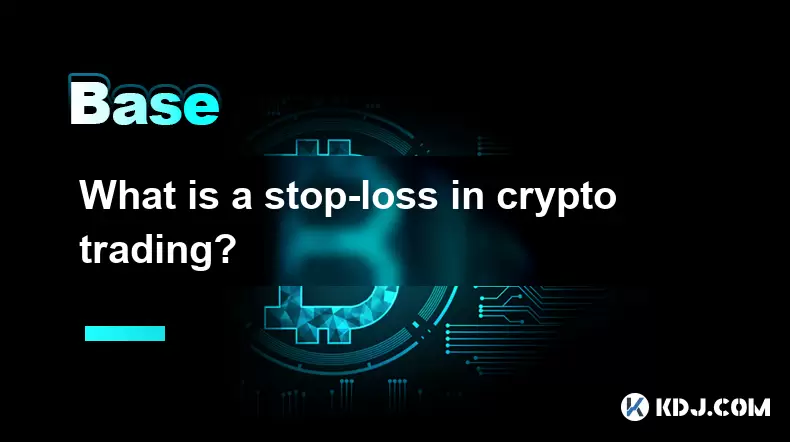-
 Bitcoin
Bitcoin $118400
0.39% -
 Ethereum
Ethereum $3814
2.17% -
 XRP
XRP $3.547
1.34% -
 Tether USDt
Tether USDt $1.000
0.00% -
 BNB
BNB $769.5
2.95% -
 Solana
Solana $191.7
6.36% -
 USDC
USDC $0.9999
0.01% -
 Dogecoin
Dogecoin $0.2722
7.75% -
 Cardano
Cardano $0.8995
5.59% -
 TRON
TRON $0.3158
-0.78% -
 Hyperliquid
Hyperliquid $47.37
4.46% -
 Stellar
Stellar $0.4848
3.54% -
 Sui
Sui $4.031
1.72% -
 Chainlink
Chainlink $20.11
3.94% -
 Hedera
Hedera $0.2832
3.16% -
 Avalanche
Avalanche $26.20
4.27% -
 Bitcoin Cash
Bitcoin Cash $530.5
0.67% -
 Shiba Inu
Shiba Inu $0.00001568
3.59% -
 Litecoin
Litecoin $118.4
1.42% -
 UNUS SED LEO
UNUS SED LEO $8.976
-0.23% -
 Toncoin
Toncoin $3.349
2.54% -
 Polkadot
Polkadot $4.590
2.54% -
 Uniswap
Uniswap $10.56
-0.59% -
 Ethena USDe
Ethena USDe $1.001
0.00% -
 Monero
Monero $327.7
0.39% -
 Pepe
Pepe $0.00001422
2.62% -
 Bitget Token
Bitget Token $4.973
-1.22% -
 Dai
Dai $1.000
0.02% -
 Aave
Aave $331.9
1.59% -
 Bittensor
Bittensor $429.6
-0.56%
What is a stop-loss in crypto trading?
A stop-loss order in crypto trading automatically sells a cryptocurrency when its price drops to a preset level, helping traders limit losses and manage risk effectively.
Jul 21, 2025 at 02:35 pm

Understanding Stop-Loss in Crypto Trading
In the volatile world of cryptocurrency trading, risk management tools are essential for protecting investments. One of the most widely used tools is the stop-loss order. A stop-loss is an automated instruction given to a trading platform to sell a cryptocurrency when its price drops to a specified level. This feature helps traders limit potential losses without the need for constant market monitoring.
Crypto markets are known for their rapid price fluctuations, and emotional trading can lead to significant losses. By setting a stop-loss, traders can predefine their risk threshold and ensure that their positions are closed automatically if the market moves against them.
How Does a Stop-Loss Work?
A stop-loss operates by triggering a market order once the cryptocurrency reaches a predetermined price. For instance, if you buy Bitcoin at $30,000 and set a stop-loss at $28,000, your position will be sold automatically if the price hits that level.
This mechanism functions across various trading platforms, including centralized exchanges and decentralized finance (DeFi) platforms. When placing a stop-loss, traders must consider market depth and liquidity, as slippage can occur in fast-moving or illiquid markets.
- Trigger Price: The price at which the stop-loss activates.
- Execution Price: The actual price at which the trade is executed.
- Slippage: The difference between the trigger price and execution price.
It’s important to note that stop-loss orders do not guarantee execution at the exact price, especially in highly volatile conditions.
Different Types of Stop-Loss Orders
There are several variations of stop-loss orders that traders can use depending on their strategy and market conditions.
- Standard Stop-Loss: A basic stop-loss that triggers a market order when the specified price is reached.
- Trailing Stop-Loss: Adjusts dynamically as the price moves in the trader's favor. For example, if the price rises, the stop-loss follows it by a set percentage or amount.
- Stop-Limit Order: Combines a stop price and a limit price. Once the stop price is reached, the order becomes a limit order, which executes only at the specified limit price or better.
Each type has its advantages and drawbacks. For example, trailing stops help lock in profits while allowing room for price movement, whereas stop-limit orders may not execute at all if the market price moves past the limit too quickly.
Setting a Stop-Loss: A Step-by-Step Guide
Setting a stop-loss is a straightforward process on most crypto trading platforms. Below is a detailed walkthrough using a typical exchange interface:
- Log in to your preferred crypto exchange and navigate to the trading pair you are interested in.
- Select the 'Stop-Loss' option from the order types menu.
- Enter the stop price at which you want the order to trigger.
- Specify the amount of cryptocurrency you want to sell if the stop-loss activates.
- Review the order details, including fees and potential slippage.
- Confirm the order and monitor your active orders section to ensure it’s properly placed.
Some platforms offer advanced settings, such as trailing stop-losses, which require entering a trailing distance in either absolute value or percentage terms. Always double-check the order type before submission to avoid unintended trades.
Common Mistakes When Using Stop-Loss Orders
While stop-losses are valuable tools, improper use can lead to unintended outcomes. Here are some common pitfalls:
- Placing stop-losses too close to entry price, leading to premature exits due to normal market fluctuations.
- Ignoring market volatility when setting stop-loss levels, which can result in being stopped out during temporary price swings.
- Using the same stop-loss for all trades, without considering individual market conditions or asset behavior.
- Failing to adjust stop-losses as market conditions change or as profits accumulate.
Traders should also be cautious of fakeouts, where the price briefly touches the stop-loss level before reversing direction. This can be mitigated by analyzing historical volatility and using technical indicators like Bollinger Bands or Average True Range (ATR).
Best Practices for Effective Stop-Loss Usage
To maximize the effectiveness of stop-loss orders, traders should adopt a disciplined and analytical approach. Here are some recommended strategies:
- Use technical analysis to determine logical stop-loss levels based on support and resistance zones.
- Align stop-loss placement with your trading strategy, whether it’s day trading, swing trading, or position trading.
- Combine stop-loss with take-profit orders to manage both downside risk and upside potential.
- Test stop-loss strategies in a demo account before deploying them with real funds.
By integrating stop-losses into a comprehensive risk management plan, traders can protect capital, avoid emotional decision-making, and improve long-term trading performance.
Frequently Asked Questions
Q: Can stop-loss orders be used for both long and short positions?
Yes, stop-loss orders apply to both long and short trades. For long positions, the stop-loss is placed below the entry price, while for short positions, it’s placed above.
Q: Do all crypto exchanges support stop-loss orders?
Most major exchanges support stop-loss features, but availability may vary. Some decentralized exchanges may not offer advanced order types like stop-loss.
Q: Is it possible to modify a stop-loss after placing it?
Yes, most platforms allow users to edit or cancel stop-loss orders as long as they haven’t been triggered.
Q: How does a stop-loss differ from a stop-limit order?
A stop-loss executes as a market order once the trigger price is reached, while a stop-limit executes only at the specified limit price or better, which may result in no execution during fast-moving markets.
Disclaimer:info@kdj.com
The information provided is not trading advice. kdj.com does not assume any responsibility for any investments made based on the information provided in this article. Cryptocurrencies are highly volatile and it is highly recommended that you invest with caution after thorough research!
If you believe that the content used on this website infringes your copyright, please contact us immediately (info@kdj.com) and we will delete it promptly.
- Crypto Stocks, Stablecoin Law & Trump: A New Era?
- 2025-07-22 02:30:12
- Kaito, Web3, and Crowdfunding: A New Era of Capital Alignment?
- 2025-07-22 02:30:12
- Saylor, Trump, and Bitcoin: A New York Minute on Crypto's Power Trio
- 2025-07-22 00:50:12
- Strategy, Bitcoin, and $122,000: A New York Minute on Crypto's Latest Moves
- 2025-07-22 00:50:12
- Dogecoin Price Prediction: Will the Pump Continue?
- 2025-07-22 01:50:12
- AVAX Price, Mining Rewards, and PI Price: What's the Buzz?
- 2025-07-22 01:50:12
Related knowledge

What is the difference between CeFi and DeFi?
Jul 22,2025 at 12:28am
Understanding CeFi and DeFiIn the world of cryptocurrency, CeFi (Centralized Finance) and DeFi (Decentralized Finance) represent two distinct financia...

What is the difference between a sidechain and a Layer 2?
Jul 20,2025 at 11:35pm
Understanding the Concept of SidechainsA sidechain is a separate blockchain that runs parallel to the main blockchain, typically the mainnet of a cryp...

What is the Inter-Blockchain Communication Protocol (IBC)?
Jul 19,2025 at 10:43am
Understanding the Inter-Blockchain Communication Protocol (IBC)The Inter-Blockchain Communication Protocol (IBC) is a cross-chain communication protoc...

How does sharding improve scalability?
Jul 20,2025 at 01:21am
Understanding Sharding in BlockchainSharding is a database partitioning technique that is increasingly being adopted in blockchain technology to enhan...

What is the "crypto trilemma" of scalability, security, and decentralization?
Jul 19,2025 at 06:28pm
Understanding the Concept of the Crypto TrilemmaThe crypto trilemma refers to the challenge of simultaneously achieving scalability, security, and dec...

What is a cliff and vesting schedule in tokenomics?
Jul 20,2025 at 10:28am
What Does a Cliff Mean in Tokenomics?In tokenomics, a cliff refers to a specific period during which token holders are not allowed to access or transf...

What is the difference between CeFi and DeFi?
Jul 22,2025 at 12:28am
Understanding CeFi and DeFiIn the world of cryptocurrency, CeFi (Centralized Finance) and DeFi (Decentralized Finance) represent two distinct financia...

What is the difference between a sidechain and a Layer 2?
Jul 20,2025 at 11:35pm
Understanding the Concept of SidechainsA sidechain is a separate blockchain that runs parallel to the main blockchain, typically the mainnet of a cryp...

What is the Inter-Blockchain Communication Protocol (IBC)?
Jul 19,2025 at 10:43am
Understanding the Inter-Blockchain Communication Protocol (IBC)The Inter-Blockchain Communication Protocol (IBC) is a cross-chain communication protoc...

How does sharding improve scalability?
Jul 20,2025 at 01:21am
Understanding Sharding in BlockchainSharding is a database partitioning technique that is increasingly being adopted in blockchain technology to enhan...

What is the "crypto trilemma" of scalability, security, and decentralization?
Jul 19,2025 at 06:28pm
Understanding the Concept of the Crypto TrilemmaThe crypto trilemma refers to the challenge of simultaneously achieving scalability, security, and dec...

What is a cliff and vesting schedule in tokenomics?
Jul 20,2025 at 10:28am
What Does a Cliff Mean in Tokenomics?In tokenomics, a cliff refers to a specific period during which token holders are not allowed to access or transf...
See all articles

























































































